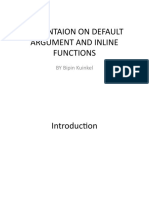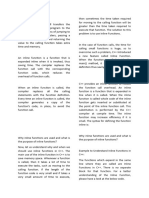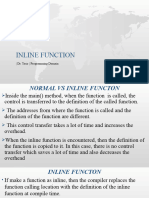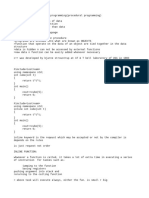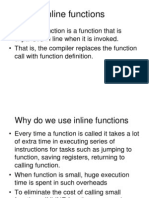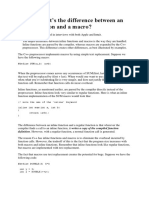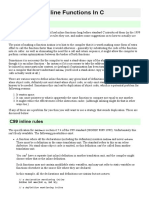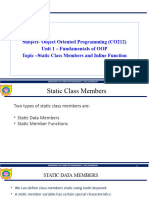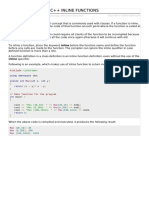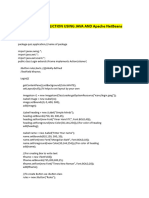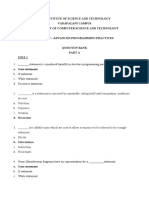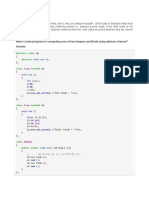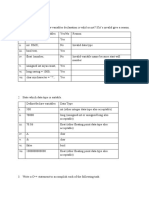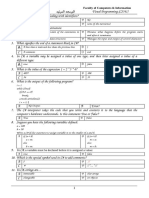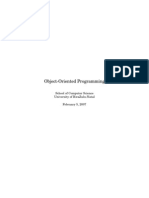0% found this document useful (0 votes)
10 views4 pagesOOPS7 InlineFunction
Inline functions in C++ allow the compiler to replace function calls with the function's definition at compile time, reducing overhead and execution time. They are beneficial for small functions where performance is critical, but can lead to increased register usage and larger binary files if overused. Inline functions cannot be used in recursive functions or those containing loops or static variables, and changes to them require recompilation to reflect updates.
Uploaded by
adarshhalse45Copyright
© © All Rights Reserved
We take content rights seriously. If you suspect this is your content, claim it here.
Available Formats
Download as PDF, TXT or read online on Scribd
0% found this document useful (0 votes)
10 views4 pagesOOPS7 InlineFunction
Inline functions in C++ allow the compiler to replace function calls with the function's definition at compile time, reducing overhead and execution time. They are beneficial for small functions where performance is critical, but can lead to increased register usage and larger binary files if overused. Inline functions cannot be used in recursive functions or those containing loops or static variables, and changes to them require recompilation to reflect updates.
Uploaded by
adarshhalse45Copyright
© © All Rights Reserved
We take content rights seriously. If you suspect this is your content, claim it here.
Available Formats
Download as PDF, TXT or read online on Scribd
/ 4





